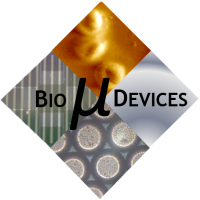GaAs biosensor based on acoustic wave transduction
Context: Pathogenic agents such as bacteria are found widely distributed in the environment water, air and in biological liquid. The detection at low concentration and quantification of such biological elements is an issue of extremely importance for the human health. This objective has increased the need for more rapid, sensitive, selective, miniaturized, portable and low cost methods of detecting these elements. Biosensors offer a great potential for achieving this goal. Advances in biosensing can be achieved by research in two main fields: the transduction mechanism and the biological interface which makes biosensing highly interdisciplinary. Another necessary feature is the addition of transducers, preferably on the same sensor chip, which are then addressed simultaneously. This enables the use of parallel analyzes and thus application of one transducer as reference. From a biological point of view, a reference is necessary to differentiate specific interaction and binding events on the active surface of transducers from unspecific binding events. From a physical perspective, parameters like temperature, viscosity and conductivity of liquids can be detected by one or more reference elements and can be subtracted for biological elements detection.
Solutions, limitations and current challenges: Biosensors may be divided into four basic groups (optical, electrochemical, thermal and mass sensing) depending on the transduction method. Acoustic wave sensors are known as label free transducers for their high sensitivity, their accuracy and the opportunity to deliver several signals depending on the mode of resonance. The most commonly used due to its high sensitivity is based on thickness shear mode known as quartz crystal microbalance (QCM). It is highly sensitive to physical parameters. This device can operate in fluids but the cost of fabrication remains too high and the possibility of simultaneous analysis is reduced with the usual structures of transducers. A new design of acoustic wave sensors array is needed.
Contribution of our group to this field: The aim of the project is to design a highly sensitive transducers network with specific bio-interfaces to detect molecules of interest at low concentration in biological liquid. In that way, we have decided to develop new structures of transducers in Gallium Arsenide, crystal which presents interesting alternative properties to quartz crystal thanks to its piezoelectric, acoustic properties, its ability to be directly bio functionalized and its common microfabrication processes. The potential of these devices to detect very low masses with a high sensitivity (several 100pg/Hz/cm2 depending on the mode shape) and selectivity was already proved by simulation. Bio MicroDevices (BMD) team has an expertise in several fields: (i) clean room microfabrication processes for microfluidics and transducers structuration, (ii) design of piezoelectric transducers (iii) immunologic bio-interface optimization and characterization on several substrates. Bio interfaces characterizations are carried out both in BMD group (AFM, SPR) and in the laboratory for quantum semiconductors and photon-based bionanotechnology team (3IT Sherbrooke)(XPS and FTIR).
Contribution of our group to this field: This project is conducted in collaboration with the University of Sherbrooke, Institute for Interdisciplinary Innovations in Technology (3IT) since 2012 in the framework of the UMI LN2. A PhD student (Vivien Lacour) is jointly supervised by Pr. J. Dubowski (Sherbrooke, Canada)
Contacts: Th Leblois and Céline Elie-Caille
Keywords: nonlabelling biosensing, piezoelectric micro-transducer, bio-interface optimization, batch process of fabrication
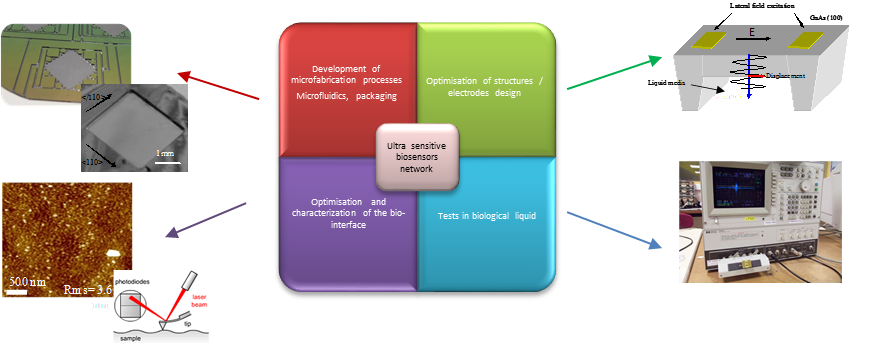
Financial and technical supports: CNRS (AAP défi “nano” 2013), Région Franche-Comté (2013, 2014), MIMENTO clean room and CLIPP Platform.
References :
- A. Bienaimé, C. Elie-Caille and T. Leblois, “Microstructuration of GaAs surface by wet etching: towards a specific surface behaviour”, J. Nanoscience and Nanotech., vol. 12, pp 6855-6863, 2012.
- A. Bienaimé, T. Leblois, G. Lucchi, V. Blondeau-Patissier and C. Elie-Caille, “Reconstitution of a protein monolayer on thiolates functionalized GaAs surface”, Int. J. of Nanosci., vol. 11(6), pp 12400181-5, 2012.
- A. Bienaimé, L. Liu, C. Elie-Caille, T. Leblois, Design and microfabrication of a lateral excited gallium arsenide biosensor, The European Physical Journal - Applied Physics 57, 21003 (2012).
- V. Lacour, A. Bienaimé, J.F. Manceau, J. J. Dubowski et T. Leblois, “Design and Experimental Studies of Gallium Arsenide Bulk Acoustic Wave Transducer Under Lateral Field Excitation”, Proc. 28th EFTF , Neuchatel, Switzerland, 23-26 june 2014, 4pp.
Gallery:
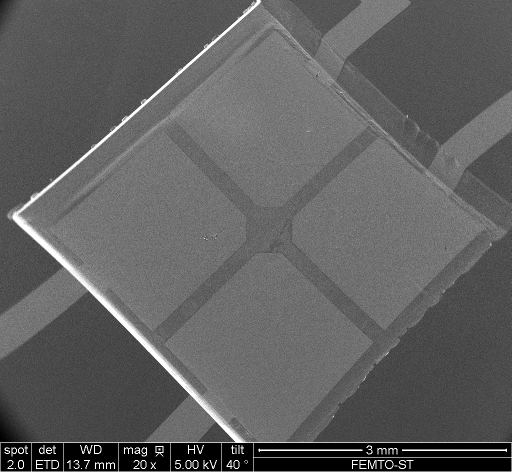 |
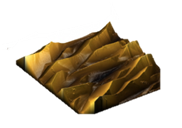 |
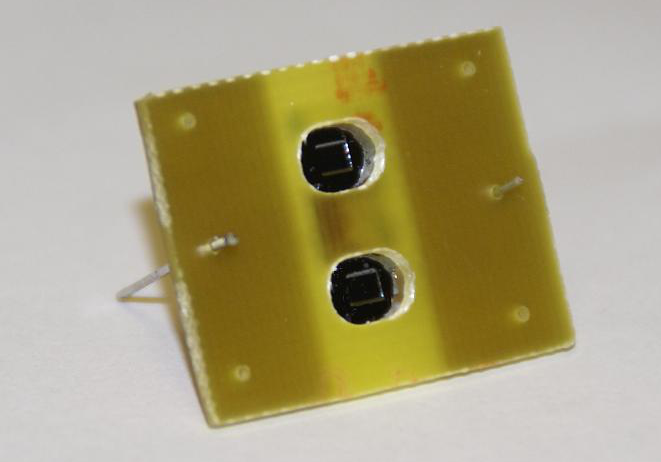 |
| Top view of a GaAs membrane | Topography of the GaAs membrane |
Entire setup |
